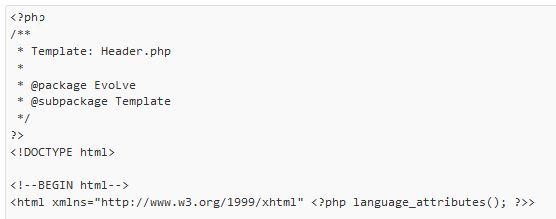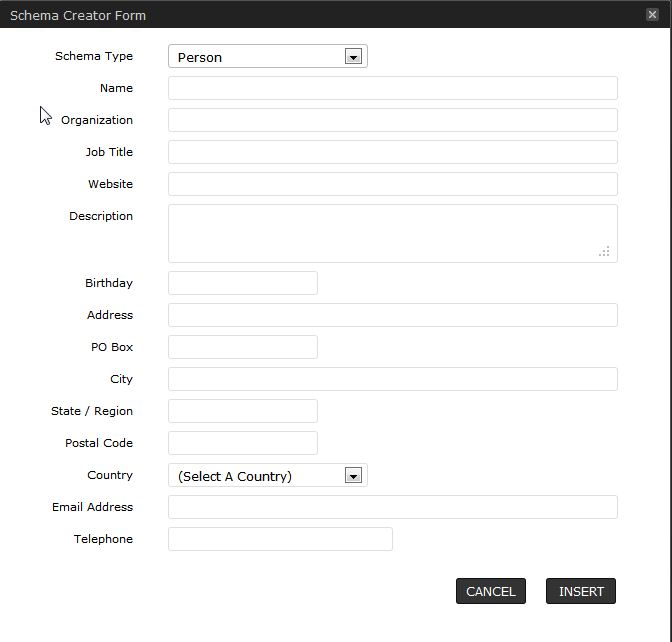Keeping up with Google’s ever-changing algorithm updates on WordPress blogs requires constant monitoring and adjustments, which many webmasters fail to keep up with. Following the Penguin algorithm update, millions of bloggers experienced a halt or decrease in traffic.
Although keeping up with industry trends does require frequent updates to continue performing well in search, most tasks are not time consuming at all. This guide will help you understand recent changes to Google’s algorithm and how to update your WordPress blog to follow the new industry standards.
The Penguin and Panda Revolution
The Penguin and Panda algorithm updates targeted low-quality websites full of duplicate content, spammy linking, and poor user experience. WordPress is a wonderful content management system and blogging platform out-of-the-box, but it does create massive amounts of duplicate content.
The days of large scale link exchanges and linking to unrelated, low-quality websites were abruptly ended by the Panda update. In previous years, many bloggers would create low-quality sites with poor internal linking structure, few quality pages and banner ads taking up majority of the pages, which was halted by Penguin. Many bloggers, especially personal bloggers, were left wondering what to do and how to monetize their blogs.
Link Building for Blogs in the Post-Penguin World
Sure, the days of quick and easy links are over, but this doesn’t mean there is any less value to link building. In fact, high-quality, relevant links are valued more than ever. Before building new links, it is imperative to go back and fix your current link profile. Start out by pulling a backlink report of your website. Sift through each of the results, identifying any low-quality or irrelevant links. Contact each webmaster to remove the links. If you cannot find contact information or the webmaster refuses to remove the links, consider using Google’s new disavow links tool.
Now that you have removed all low-quality links pointing to your website, take a look at who you are linking to. Many personal bloggers sell text link ads and sponsored posts for extra income. These days are nearing their demise. Your PageRank is not only determined by inbound links, but also outbound links.
Unless implicitly stated by the advertiser, I would highly recommend adding the NoFollow attribute to any paid links on your website. Let’s say you own a travel blog, and a travel company purchased a sponsored post from you with the anchor text “cheap holiday travel packages.” You would change the markup for the link to look like this:
cheap holiday travel packagesThis will remove any value passed on from your website to the advertiser, and will help your website conform to Google’s webmaster quality guidelines for link schemes.
Fear not, your blog can still be monetized. Consider signing up for Google’s display advertising network: AdSense. Offering display advertising options is the safest way to continue monetizing blogs. After all, Google wouldn’t offer it if it would hurt websites. Be careful not to overdo it with the display ads.
Websites with 50 percent or more advertisement saturation will be penalized, so placement and ad quality will be key to allowing effective ads that will make you money. Consider looking into conversion optimization and a/b testing to find which ads perform best in different spots on your website, and be sure to filter the types of ads that can be displayed so they are relevant to your audience. YouTube videos can also be monetized, so consider starting a YouTube channel and incorporate video into your blog.
Although most link building practices have been blacklisted by Google, there are still many ways to build links to blogs. Instead of exchanging links on lengthy links pages, consider exchanging guest posts with highly relevant blogs. Write high-quality, enticing content that other websites will want to reference with links. Sign up for Google Plus and set up Authorship.
Look for websites containing recommended blog lists relevant to yours, and inquire about getting listed. Review products within your industry, and use social media to let those companies know you reviewed their products. They may include your review in their list of testimonials. Attend or exhibit at industry events which list attendees on the event’s website with links. Become a thought leader in your niche by creating and promoting linkable assets like white papers, guides, videos, ebooks, and best practices.
Setting up Your Blog for SEO
Optimizing WordPress blogs requires a few plugins and configurations to meet today’s industry standards. Start off by downloading and installing a plugin called WordPress SEO. This is the best SEO plugin available for WordPress, and it has an import feature to import any settings from other SEO plugins.
Download and activate another plugin called W3 Total Cache. This is the best caching plugin available, and works in unison with WordPress SEO. W3 Total Cache will help decrease page loading speeds by creating a cache of each page. Any time you mark a comment as spam, save a draft of a post, or click off the page editor, WP creates a duplicate copy of those pages.
Using the WP-Optimize plugin will purge all those unnecessary copies, which will save server space and speed up your website. WP-PageNavi is another must-have plugin for optimizing your pagination by adding the rel=prev and rel=next attributes. This will help your website be indexed more efficiently and increase crawl depth.
Once all those plugins are installed and activated, you will need to configure them. Use the WordPress SEO plugin to set up Google and Bing Webmaster Tools from the “Dashboard” menu on the plugin settings. Next, go to the Titles &Metas menu. On the General tab, check the box to force rewrite of titles if your custom title tags are not showing up. Check the box to Noindex subpages of archives. Check all four boxes to clean up the head by hiding RSD links, WLW manifest links, shortlinks, and RSS links.
On the Home tab, write a custom title tag and meta description for your homepage. You will also want to go through all pages and posts on your site and write custom titles and descriptions for each using the post editor. Enter in the URL of your blog’s G+ brand page in the Google Publisher Page field. This will set up the rel=publisher attribute for your homepage and connect your blog to your G+ page.
Once all those options are set up, go to the Taxonomies tab. WordPress creates massive amounts of duplicate content through taxonomies. Every time a category, tag, date, or author archive page is indexed, it creates a duplicate copy of each of those posts.
Check the box to noindex, follow the categories, tags, and format. Go to the Other tab and noindex, follow the author archives and date archives. Don’t worry about crawl depth from doing this. As long as you have optimized pagination set up through the WP-PageNavi plugin, your website will still be crawled effectively. I recently ran an experiment on noindexing taxonomies in WordPress to test this theory out.
Next, go to the XML Sitemaps menu in the WordPress SEO plugin. Check the box to enable XML sitemap functionality, and submit your sitemaps in Google and Bing Webmaster tools. Check the boxes to ping Yahoo! and Ask.com. Check the box to exclude taxonomies for categories, tags, and format.
Now go to the Permalinks menu and check the boxes to strip category bases and remove ?replytocom variables. You will also want to go to the WordPresspermalink settings and strip categories and datestamps out as well. On the Internal Links menu, check to enable breadcrumbs and implement breadcrumbs on your posts. A snippet of code will be provided in the plugin.
Setting up G+ Authorship
Setting up Google Plus authorship is very quick and easy on WordPress sites. Download and install a plugin called Google Author Link. Under the settings menu for the Google Author Link plugin, select an author for the homepage of your website. Now go to the Users menu in the WP dashboard and edit each user’s profile. Add in the URL to each author’s G+ profile. Next, ask each author to add a URL to your website on the “Contributor To” section of their G+ profile. Authorship is now set up on your blog.
Setting up Microdata
Microdata is still a relatively new concept, first introduced with HTML5. Schema.org is a joint project by Google, Yahoo and Bing to help webmasters mark up their websites so search engines can better understand their content. Bing and Yahoo give a boost in rankings just for setting it up while Google changes the appearance of your listings in search engine result pages to increase clickability.
Before setting up microdata, you will need to change the doctype of your website to the HTML5 format. To do this, go to Appearance>Editor. Select the header.php file. At the very top of the header.php file, you will see a doctype. If it is not already in HTML5 format, change the doctype to <pre><code><!DOCTYPE html></code></pre>. After updating the file, check your website to make sure this did not cause any compatibility issues.
Now that your website is HTML5 compatible, you will need to download and install a plugin called Schema Creator by Raven. Once activated, the plugin will automatically add schema.org microdata throughout your website.
Setting up microdata is as simple as that. If you would like to add in more microdata, go to your post editor or page editor, and you will notice a small icon with the letters “SC” in it at the top of the editor. This tool will allow you to add in microdata for people, products, events, organizations, movies, books, and reviews. It will create a short code and place it within the page for you.
A Few More Quick Tips
Now that your website conforms to today’s Google algorithm standards, there are a few other simple maintenance activities to keep in mind:
Always update your version of WordPress and all plugins as soon as updates are available. If you fail to keep up with updating plugins and versions, you may run into compatibility issues later down the road that will break your website.
Also, make an effort to publish new content at least once per month. Google loves fresh content, and favors websites that are updated frequently. If you get lazy about posting regularly, your traffic and rankings will suffer.
One final piece of advice is to monitor your analytics and webmaster tool accounts at least once per month. This will help you monitor technical issues that may arise as well as traffic drops. If you notice any abnormalities or receive warning messages in webmaster tools, act on these issues in a timely fashion.








